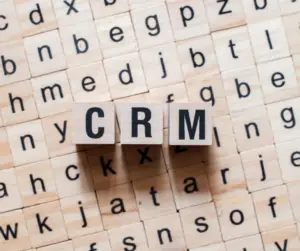The massive disruption brought about by the COVID-19 pandemic is accelerating the trend toward the digital transformation of supply chains.
A 2020 survey of 200 senior-level supply chain executives conducted by Ernst & Young LLP found that 64 percent of the respondents said digital transformation would accelerate due to the pandemic. But automation—robots in warehouses and stores, driver-less forklifts and trucks and delivery drones—is just part of the picture.
Companies need connected, cloud-based supply chain technologies across planning, procurement, manufacturing and logistics that work beyond the organization’s four walls.
Such systems would enable companies to respond swiftly to a change in customer demand, seen instantly by the entire value chain–the organization, its suppliers and their suppliers’ suppliers–so they can collectively adjust supply plans and production schedules immediately.
In the Ernst & Young survey, 60 percent of executives said the pandemic has increased their supply chain’s strategic importance. Accordingly, companies urgently need to design a supply chain organization that will fit the new cloud-based digital and autonomous-focused era.
The supply chain of the future, Ernst & Young says, will need to be agile, flexible, efficient, resilient and digitally networked for improved visibility. Organizations, therefore, should focus on five priorities for recovery and beyond.
1. Re-imagine the strategic architecture of the supply chain.
Companies need to redefine their supply chain strategy and alter global trade flows, considering new trade agreements, country incentives and omni-channel acceleration.
They will also need to re-imagine their supply chain operating model — what work should get done locally, regionally and globally, including warehouses and manufacturing sites. There are considerable tax implications here, and a new model can also help a company prepare for future disruption.
2. Build transparency and resiliency.
Organizations need to improve disruption response with real-time visibility and monitoring of their end-to-end supply chain, as well as performing scenario planning and simulations. Cloud-based enterprise resource planning systems will help achieve this goal.
Companies also need to review their supply chain footprint. Do they have alternate sources of supply established? Are they ensuring that they are not limited by vendor or geographic concentration?
3. Extract cash and cost from the supply chain.
Companies need to drive a step change in their supply chain cost structure and working capital profile by focusing on rationalizing stock-keeping units, reducing procurement spending, optimizing logistics and warehouse operations, and driving manufacturing productivity.
Companies also need to reduce their working capital via supply chain segmentation, refreshed inventory planning parameters and changes in payment terms.
4. Create a competitive advantage with sustainability.
The future is a circular economy where there is no waste in products or manufacturing.
Organizations need ways to redesign and engineer new products to achieve this circular economy and monitor third-party risk with supplier sustainability assessments across tiers 1-3.
5. Drive agility and opportunities for growth through a digital supply chain.
Finally, organizations need to work toward implementing a cloud-based, end-to-end supply chain across planning, procurement, manufacturing and logistics. This can drive efficiencies and also open new revenue streams.
Companies are already using supply chains as an engine for growth and a key differentiator versus competitors.
Ernst & Young notes that many executives are hoping that the COVID-19 pandemic is a once-in-a-lifetime event, but as the adage goes, “hope is not a strategy.”
“There are ways to stand out and better navigate the storms of the next inevitable disruption,” Ernst & Young says. “These include re-imagining your supply chain strategies for risk and resilience and finding ways to extract cash and invest in digital technologies at speed.”





